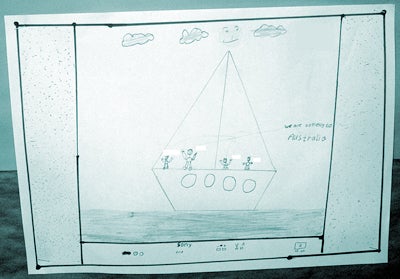A last resort? - Summary Guide: About the Inquiry
A last resort?
National Inquiry into Children in Immigration Detention

The Human Rights and Equal Opportunity Commission was
established in 1986. It is an independent statutory organisation and reports
to the federal Parliament through the Attorney-General.
The Commission's goal is to foster greater understanding
and protection of human rights in Australia and to address the human rights
issues facing a broad range of individuals and groups.
When the Commission was established it was given a responsibility
to advise the Commonwealth Government on Australia's commitments under
international laws and whether these are reflected in Commonwealth laws,
policies and practices.
In November 2001, the Human Rights Commissioner, Dr Sev Ozdowski,
announced that the Commission would hold a National Inquiry into Children
in Immigration Detention.
Why did we hold an Inquiry?
Since 1992, asylum seekers who arrive in Australia without
a visa - both adults and children - have been subject to mandatory detention.
In all but a few rare cases, their detention ends only when they are recognised
as refugees and granted a protection visa or when they are removed from
the country.
From 1999 the number of children in detention rose significantly
and there was widespread concern about their treatment.
The Inquiry was established to examine whether the
laws requiring the detention of children and the treatment of children
in immigration detention met Australia's obligations under international
law, especially the Convention on the Rights of the Child.

Drawing of a boat of children seeking asylum in
Australia,
by a child in immigration detention
What did the Inquiry look at?
First, the Inquiry considered whether Australia's detention
laws complied with international law and looked at alternatives to placing
children in immigration detention centres.
The Inquiry also looked at the treatment of child asylum
seekers held in immigration detention centres between 1999 and 2002. In
particular, it examined:
- the safety and security of children in detention
- the effect of detention on children's mental and physical
health
- whether children in detention received an appropriate education
- the care available to children with a disability in detention
- the opportunity for children in detention to enjoy recreation
and play
- the care of unaccompanied children in detention
- children's ability to practice their religion and culture
in detention.
Finally, the Inquiry considered the needs of child asylum
seekers and refugees living in the community after being released from
detention.

